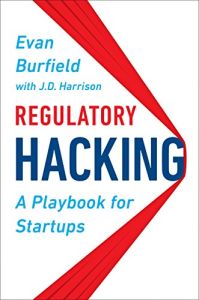The digital revolution has transformed people’s lives, but technology entrepreneurs often run up against the realities of an analog world, especially when it comes to dealing with governing bodies and regulations. Experts Evan Burfield and J.D. Harrison offer a useful guide to start-ups that must navigate among the powerful and influential to bring their products or ideas to market. The authors present illuminating case studies and lessons that entrepreneurs will want to consult when they resort to their own “regulatory hacking.”
Uber’s rise created “an imperfect example” for tech start-ups.
Uber started testing its ride-hailing service in Washington, DC, in the fall of 2011. It had encountered objections about its compliance with local regulations in other cities, like Chicago, but it had its first serious push-back from the DC Taxicab Commission, which asserted that Uber was operating outside the law. Uber’s conflict with the agency went on for years. The company ultimately won, in part due to the taxi industry’s aggressive critics, a general dislike for its poor service and Uber’s deepening financial resources.
Uber’s success in Washington and elsewhere typifies a model by which start-ups introduce a “disruptive product or service” before most people are even aware of it. The disrupters then use the momentum gained to accumulate resources that they deploy to penetrate and ultimately dominate new markets. With this kind of sway, a new firm can overcome objections from regulators and other economic interests.
It might be easy to attribute Uber’s success to its capital...
















Comment on this summary